Textures: Poems by John Eppel and
Togara Muzanenhamo, Published by amaBooks
Historically-speaking,
the armed conflict that ushered in the new nation of Zimbabwe in 1980 is still
a very recent series of events. Thirty-four odd years may be quite a
chunk in the life of an individual, but are only a very negligible proportion
of a nation’s life.
Not
surprisingly, therefore, there are many across the political and military
divides whose memories of that costly era of Zimbabwe’s life as a nation are
still very fresh and quite unforgotten. They recall events and incidents from
that conflict with clarity, immediacy and intensity.
It goes
without saying that interpretation of the war of liberation will depend on
where one stood historically and culturally in the beginning as well as politically.
Cross-over cases are not unheard of in the same sense that nostalgic
conservatism either way is also a definitive characteristic of some among us.
Perhaps a
small exercise in forensic linguistics (a combination of, among other things,
linguistic stylistics and literary stylistics) would not be out of place here.
Forensic Linguistics is an investigative tool that can help readers and
scholars to unpeel the layers of a subterranean consciousness that contains
within it deep-seated personality traits and sensibilities that have the effect
of defining an individual’s identity and background.
Thus, it
becomes a given that Togara Muzanenhamo is a Zimbabwean poet who, true to his
own experiences, portrays Zimbabwean sensibilities. That, however, does not diminish
the authenticity and relevance of his experiences, nor does it relegate his
poetic voice. On the contrary his often lyrical voice elevates his poetry to
almost dizzy heights. His ‘Mercantile Rain’ (pp.61 -62) is a case in point.
During our
stay at the writers’ residency at the Chateau de Lavigny in Switzerland in
2005, Takashi Arima, the renowned Japanese poet and author of the anthology ‘Journey
to the Real’ observed that modern Japanese poetry is largely a derivative of
the Bob Dylan poetic influence. This assertion speaks to the link between
poetry and music.
A close
reading of ‘Mercantile Rain’ suggests that Muzanenhamo might have been
influenced by Leonard Cohen, the iconic literary bard and musical innovator.
The scene depicted in ‘Mercantile Rain’ is reminiscent of Cohen’s
hauntingly-beautiful ‘The Guests’ as a song whose apocalyptic feel is
undeniable.
In
Muzanenhamo’s poem, the colonel comes across as a forlorn and somewhat
distracted isolate pining away on a farm. The poem is avant garde in terms of
the width and variety of experience that it boasts of. Muzanenhamo, it can be
said, is a well-travelled and well researched connoisseur of experience.
Zvita is
the month of December, a time of rain, soft green grass and migratory birds.
Everywhere the crops are up and the frogs are hopping about with reckless
abandon – a vivid testimony to abundant life. Muzanenhamo subverts this
template and gives us a December that gives “birth to death’s black oozing
grease”. His study of a skeleton is, in this case, a metaphor for life
diminished. Muzanenhamo writes about “ancient oils of life, rich with spent
secretions, returned to soil”. The sense of bathos here is overwhelming.
By contrast
John Eppel is less circumspect about the land issue in Zimbabwe as shown is his
poem, “Appropriating the Land” (p.65). Eppel writes: “We did dams”, and “We
erected bossy warnings/with words like ‘forbidden’ and ‘only’.” The poem is a
nostalgic invocation of privileges lost and the decidedly bourgeois facile
activities and pre-occupations that characterised white farmers on vast tracts
of land with plenty of empty spaces to paint or write about “sunsets,/
jacarandas, blue skies,/ the dispositions of our pets,/and the fish eagle’s
cries”.
The
collaboration between the duo of Eppel and Muzanenhamo is reminiscent of the
collaboration between William Wordsworth and S.T. Coleridge in that Eppel like
Wordsworth seems to have an affinity for things rural and rustic while
Muzanenhamo like Coleridge is the educated voice of poetry. One could use “The
preface to the Lyrical Ballads” and the “Biographia Literaria” to underpin the
attributes and preferences of our two poets. When in “Young Woman Walking”
Eppel writes, “Thus I, ageing heteroclite,/pencil in hand, sit down and write”
one cannot help linking him with the voyeuristic Tiresius, the “old man with
wrinkled female breasts”. Both personas are silent witnesses to an event that
is unfolding. Eppel’s lines are typical of the many poetic epigrams that
punctuate the anthology in many places.
Eppel’s “Dorothy
Recollects” (p.47 -49) evokes memories of Wordsworth and Coleridge and
indirectly cites their occasionally tempestuous relationship. Muzanenhamo often
tries, with success, his hand at concrete poetry. “The Hamilton Piece” is a
typical example of this stylistic bent in Muzanenhamo’s poetry. In true
romantic poetry style Eppel writes about birds (pp. 25 -29) and manages to
produce vintage lines like, “and don’t forget to kill me once I’ve dined” (Hornbills
in My Garden).
“Textures”
is a well-crafted and creatively satisfying anthology that often oozes with
perfection. A must read for poetry enthusiasts!
- Reviewed
by David Mungoshi © Panorama Magazine 2015.
http://www.panorama.co.zw/index.php/book-review/826-textures-poems-by-john-eppel-and-togra-muzanenhamo-published-by-amabooks



















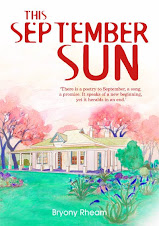.jpg)



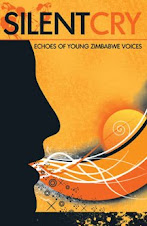
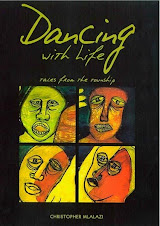

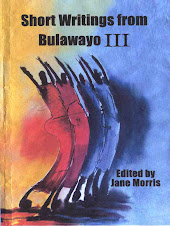


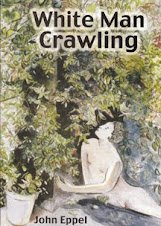










.jpg)





















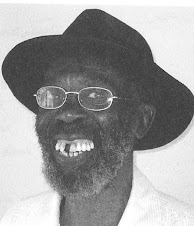






No comments:
Post a Comment